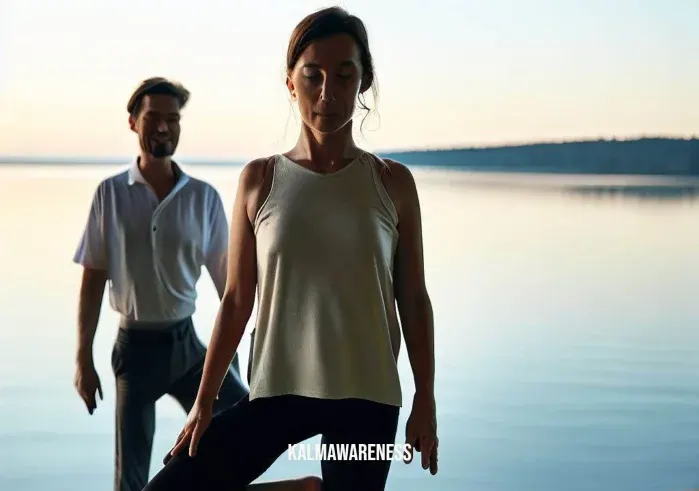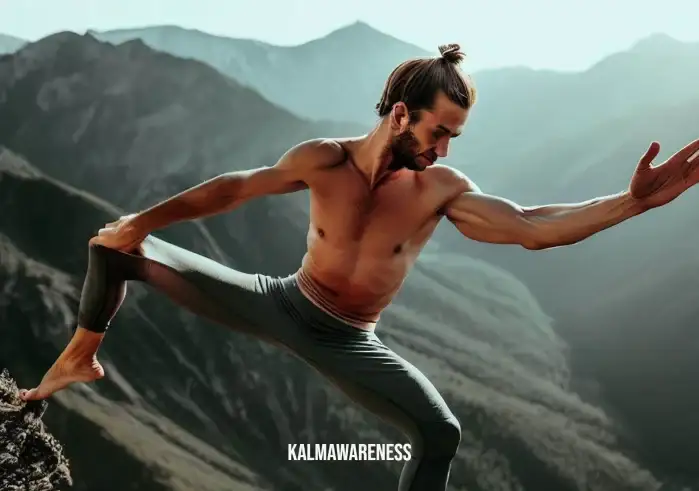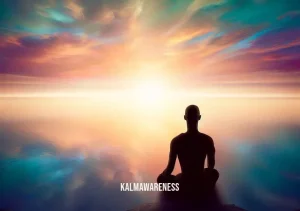The Half Lift Yoga Pose
| Description | Explanation |
|---|---|
| Pose Name | Half Lift Yoga Pose |
| Original Name | Ardha Uttanasana |
| Difficulty Level | Intermediate |
| Pose Category | Standing Poses |
| Exercise Duration | Beginners: 15-30 seconds, Advanced: 30-60 seconds |
Yoga is an ancient practice that brings harmony to the mind, body, and soul. Among the countless yoga poses, the Half Lift Yoga Pose (Ardha Uttanasana) stands out as a beneficial and invigorating pose that offers a multitude of benefits. Whether you’re a seasoned yogi or just starting your yoga journey, this pose can be a wonderful addition to your practice.
Step by Step Guide to Half Lift Yoga Pose:
- Starting Position: Begin by standing tall with your feet hip-width apart and your spine straight. Place your hands on your hips, and take a few deep breaths to center yourself.
- Inhale and Lengthen: As you inhale deeply, lift your chest and lengthen your spine, extending it forward. Keep your shoulders relaxed and away from your ears.
- Halfway Lift: Exhale and engage your core muscles as you hinge at your hips, bringing your torso parallel to the ground. Your hands can rest on your shins or the floor, whichever feels comfortable.
- Keep the Back Straight: Ensure that your back remains straight and flat. Imagine a line extending from the crown of your head to your tailbone, maintaining the alignment throughout the pose.
- Engage Your Legs: Keep your legs active and firm. Distribute the weight evenly between both feet to create a stable foundation.
- Gaze Forward: Direct your gaze slightly forward, keeping your neck in line with your spine. Avoid straining your neck by looking up or down.
- Breathe Smoothly: Take deep breaths in this position, allowing your chest and ribcage to expand with each inhale.
- Modifications: If you have tight hamstrings, you can bend your knees slightly to ease the stretch in the back of your legs. Alternatively, place your hands on yoga blocks to support your halfway lift.
Practicing the Half Lift Yoga Pose regularly offers numerous benefits, including:
- Strengthening the Core: This pose engages the core muscles, helping to build a strong and stable core.
- Improving Posture: Regular practice of this pose enhances your posture by lengthening and aligning the spine.
- Stretching the Hamstrings: Ardha Uttanasana gently stretches the hamstrings, increasing flexibility in the back of the legs.
- Energizing the Body: The pose is known for its invigorating effect, which can help combat fatigue and boost energy levels.
- Mindful Breathing: Half Lift Yoga Pose encourages deep, mindful breathing, promoting relaxation and reducing stress.
- Preparation for Forward Bends: This pose serves as an excellent preparatory step for deeper forward bending poses.

The Half Lift Yoga Pose
In the first part of our yoga journey, we explored the Half Lift Yoga Pose (Ardha Uttanasana) and learned how to perform this invigorating pose with proper alignment. Now, let’s take a deeper dive into the incredible benefits that the Half Lift Yoga Pose offers, discover who might find it challenging to practice, and explore variations suitable for practitioners of different experience levels.
Benefits of Half Lift Yoga Pose:
- Strengthens the Back: The Half Lift Yoga Pose strengthens the muscles of the lower back, promoting better support for the spine and reducing the risk of back pain.
- Opens the Chest: As you lift your chest in this pose, it opens the front of the body, improving posture and increasing lung capacity for better breathing.
- Stimulates Blood Flow: The forward bending aspect of the pose encourages blood flow to the brain, enhancing circulation and providing a fresh supply of oxygen to the head.
- Relieves Tension in the Neck and Shoulders: Practicing Ardha Uttanasana can help release tension and tightness in the neck and shoulders, particularly if you spend long hours sitting at a desk or computer.
- Enhances Spinal Flexibility: The gentle stretching of the spine in this pose improves flexibility and suppleness in the entire back.
- Encourages Mindfulness: Half Lift Yoga Pose emphasizes the connection between breath and movement, promoting a sense of presence and mindfulness during the practice.
- Prepares for Deeper Forward Bends: Regularly practicing this pose serves as a preparation for more advanced forward bending postures, as it helps to lengthen and warm up the hamstrings.
Who Cannot Do Half Lift Yoga Pose:
While the Half Lift Yoga Pose offers a range of benefits, it may not be suitable for everyone. Individuals with the following conditions should avoid or modify the pose:
- Pregnancy: Pregnant women should avoid practicing Ardha Uttanasana, especially in the later stages of pregnancy, as it involves forward bending and can put pressure on the abdomen.
- Low Back Injuries: If you have a history of low back injuries or chronic back pain, consult with a yoga instructor or healthcare provider before attempting this pose.
- High Blood Pressure: People with uncontrolled high blood pressure should avoid this pose, as the forward bending can cause an increase in blood pressure.
- Vertigo or Dizziness: If you experience vertigo or dizziness, practice this pose with caution and consider keeping your gaze forward rather than looking up.
Variations of Half Lift Yoga Pose:
For practitioners of different experience levels, the Half Lift Yoga Pose can be modified to suit their needs:
- Beginner Variation: If you are new to yoga or find the full pose challenging, place your hands on yoga blocks or a sturdy surface instead of reaching for the floor. This modification helps maintain proper alignment and supports your practice as you build strength and flexibility.
- Advanced Variation: To deepen the pose and add more challenge, you can try lifting one leg off the ground while in Ardha Uttanasana. This variation, known as “One-Legged Half Lift,” requires increased core stability and balance.
- Dynamic Variation: Incorporate movement into the pose by flowing between Half Lift and Standing Forward Bend. Inhale to lift into Half Lift, and exhale to fold forward into Uttanasana. This dynamic sequence helps create a sense of fluidity and breath awareness.

The Half Lift Yoga Pose
In the first two parts of our yoga journey, we explored the Half Lift Yoga Pose (Ardha Uttanasana), its benefits, who should avoid it, and variations for different experience levels. Now, let’s delve deeper into the fascinating history of this pose, explore its spiritual significance, and learn some valuable tips for getting the most out of your practice.
The History of Half Lift Yoga Pose:
The practice of yoga dates back thousands of years, and the origins of specific yoga poses can be traced to ancient texts and teachings. While the exact historical origin of Ardha Uttanasana may not be documented, it is an integral part of various yoga traditions that emphasize the importance of forward bends and spinal flexibility.
The Spiritual Significance of Half Lift Yoga Pose:
In yoga, each pose carries not only physical benefits but also spiritual significance. The Half Lift Yoga Pose represents the concept of balance and unity. As you lift and lengthen the spine, you are encouraged to find balance between effort and ease. The pose symbolizes the journey of self-discovery and the union of mind, body, and spirit.
Tips for Getting the Most out of Half Lift Yoga Pose:
To fully experience the benefits of Ardha Uttanasana and deepen your practice, consider the following tips:
- Mindful Breathing: Throughout the pose, pay attention to your breath. Inhale deeply as you lift and lengthen the spine, and exhale as you release into the forward bend. Let your breath guide your movement.
- Engage the Core: Activate your core muscles to support your spine and maintain stability in the pose. This engagement helps protect your lower back and enhances the benefits of the pose.
- Microbend the Knees: Avoid locking your knees during the pose to prevent strain on the joints. Instead, maintain a slight bend in the knees to protect the hamstrings and maintain a sense of fluidity.
- Smooth Transitions: When flowing between Half Lift and other yoga poses, ensure smooth transitions to create a seamless and connected practice.
Common Mistakes to Avoid:
To practice Half Lift Yoga Pose safely and effectively, be mindful of the following common mistakes:
- Rounding the Back: Avoid rounding the back during the forward bend. Focus on lengthening the spine instead.
- Hunching Shoulders: Keep your shoulders away from your ears and avoid hunching forward.
- Overarching the Neck: Maintain a neutral neck position, neither looking up nor down excessively.
Modifications for Injuries or Limited Flexibility:
If you have injuries or limited flexibility, the following modifications can help you enjoy the benefits of Ardha Uttanasana:
- Using Props: Place your hands on yoga blocks to bring the floor closer to you and ease the stretch on the hamstrings.
- Bent Knees: Slightly bend your knees if you experience tightness in the hamstrings.
Poses Complementary to Half Lift Yoga Pose:
Incorporate the following yoga poses into your practice to complement the benefits of the Half Lift Yoga Pose:
- Downward Facing Dog (Adho Mukha Svanasana): This pose enhances flexibility and strength in the entire body, preparing you for deeper forward bends.
- Triangle Pose (Trikonasana): Trikonasana offers a side stretch that complements the forward bending action of Ardha Uttanasana.





